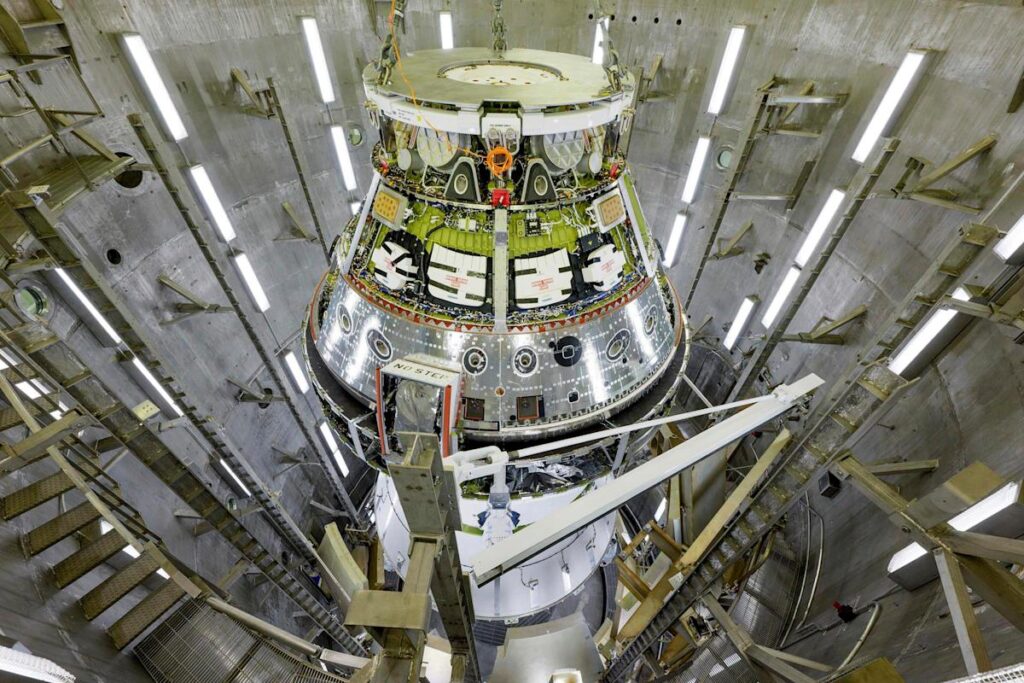NASA may consolidate work in some regional offices, shifting thousands of jobs, but has no plans for massive layoffs or the elimination of major departments, acting administrator Janet Petro said Monday.
The changes in the structure of the space agency’s work force reflect both an effort to cut costs and improve collaboration as the Trump administration pushes ambitious space goals, Petro told POLITICO.
“In the past that was never even allowed to be talked about,” she said in an interview, referring to the consolidation of some work.
Her comments on the sidelines at the Space Symposium in Colorado Springs come as Elon Musk’s DOGE has slashed thousands of government jobs and the billionaire pursues his own space ambitions, both independently and as a NASA partner.
But Petro said there are good reasons to consider consolidating some of NASA’s operations.
“I think there would be a lot of stakeholder interest in that,” she said. Such a move could help drive efficiency by improving collaboration between NASA offices working on similar projects, said Petro, who herself heads the Kennedy Space Center.
She did not say how many jobs would be shifted under any possible reorganization plan.
Petro has led the agency since January while President Donald Trump’s pick for NASA administrator, entrepreneur Jared Isaacman, awaits Senate confirmation. His hearing is scheduled for Wednesday.
While NASA maintains a headquarters in Washington, most of NASA’s work is done in multiple offices across the United States, including the historic Kennedy Space Center that manages launches into space and the Johnson Space Center that manages human space flight. Some have massive footprints, with Kennedy alone home to 10,000 employees.
If NASA were to move headquarters out of Washington, functions directly tied to Washington, like congressional outreach, should probably stay in the capitol, Petro said.
“I would think there would be a small office left in DC, where you would have a smaller footprint for the office of the administrator, and then likely, [legislative] affairs and maybe general counsel,” she said.
The move comes in response to the Office of Management and Budget’s request that agencies submit plans to seek cost reductions, including by moving offices.
However, Petro said that there was no NASA plan to cut further offices following the closure of several small offices in headquarters as part of the reduction-in-force. “We have a lot of mission on our plate, and probably not enough workforce,” she said.
Petro added that the DOGE was helping reform NASA, and called out their work on revamping the agency’s IT systems. “They’ve been very helpful in that regard.”
Musk has voiced enthusiastic support for a Mars mission, calling NASA’s plans for a moon landing a “distraction,” and saying that his new Starship rocket would blast-off on a crewed mission to Mars sometime in 2030. President Trump appears to have picked up the enthusiasm of Musk, a top adviser, with Trump promising to land humans on Mars during his inaugural address.
It’s unclear so far if Musk would want NASA to fund such a mission. His timeline for his rocket is years ahead of NASA’s own plans to land humans on Mars sometime in the mid-2030s.
If he does want NASA to lead such a mission, however, he may want to rethink such plans — Petro said that realistically, NASA could not launch a mission in the next five years to Mars and expect astronauts to survive the trip. Such a mission is fraught with dangers, many of which NASA lacks a clear understanding of.
“I’ve not talked with anybody who or who says that that’s even possible or realistic” to launch a NASA Mars mission in the next five years, Petro said.
Read the full article here


